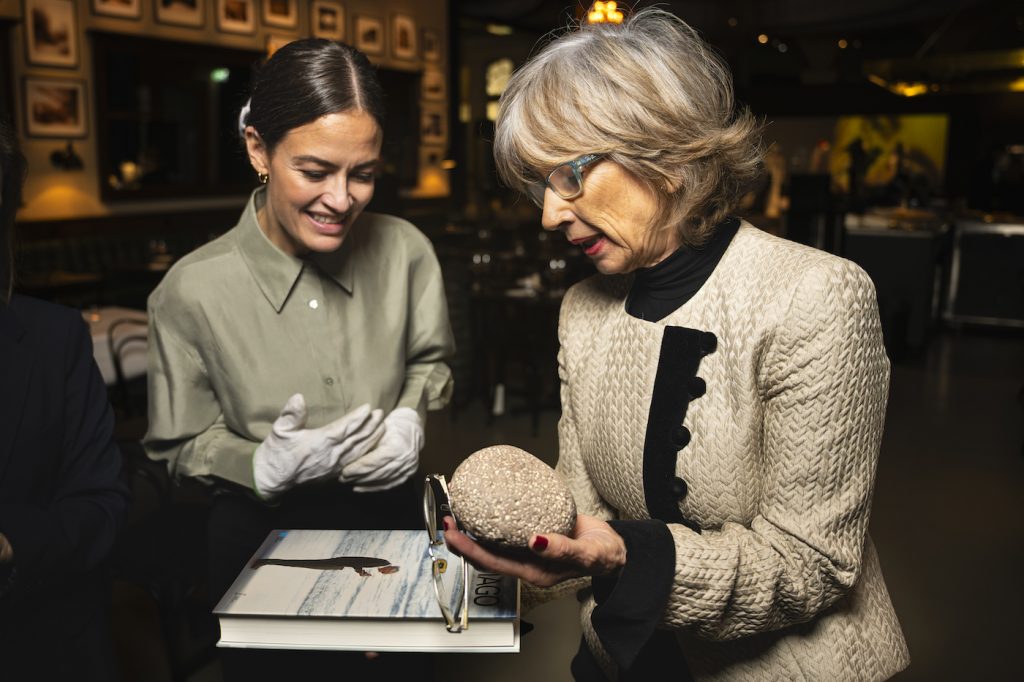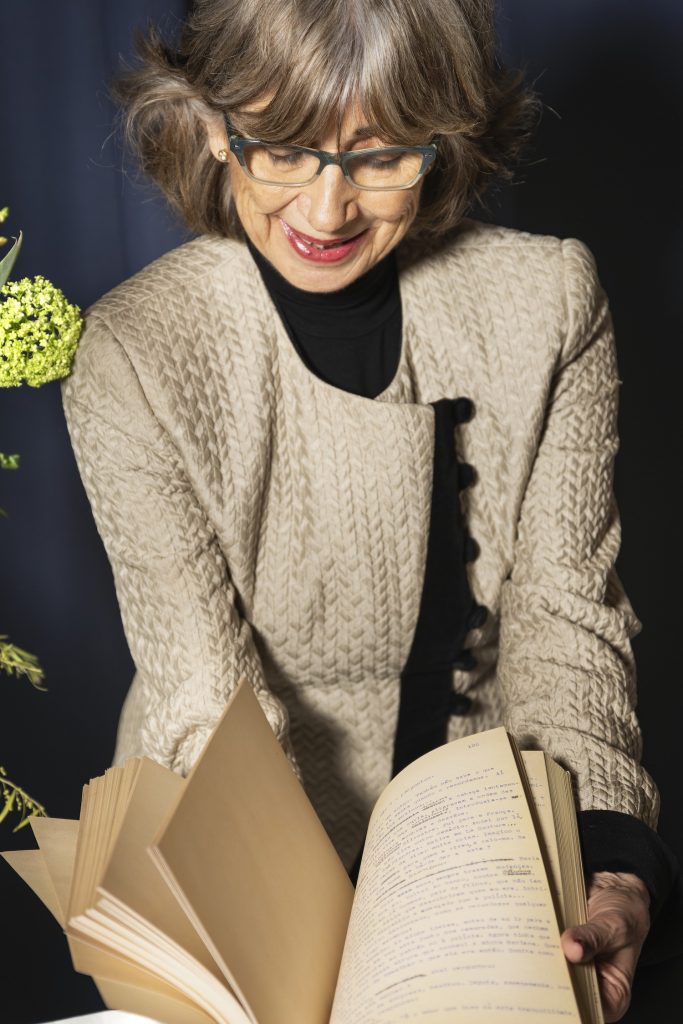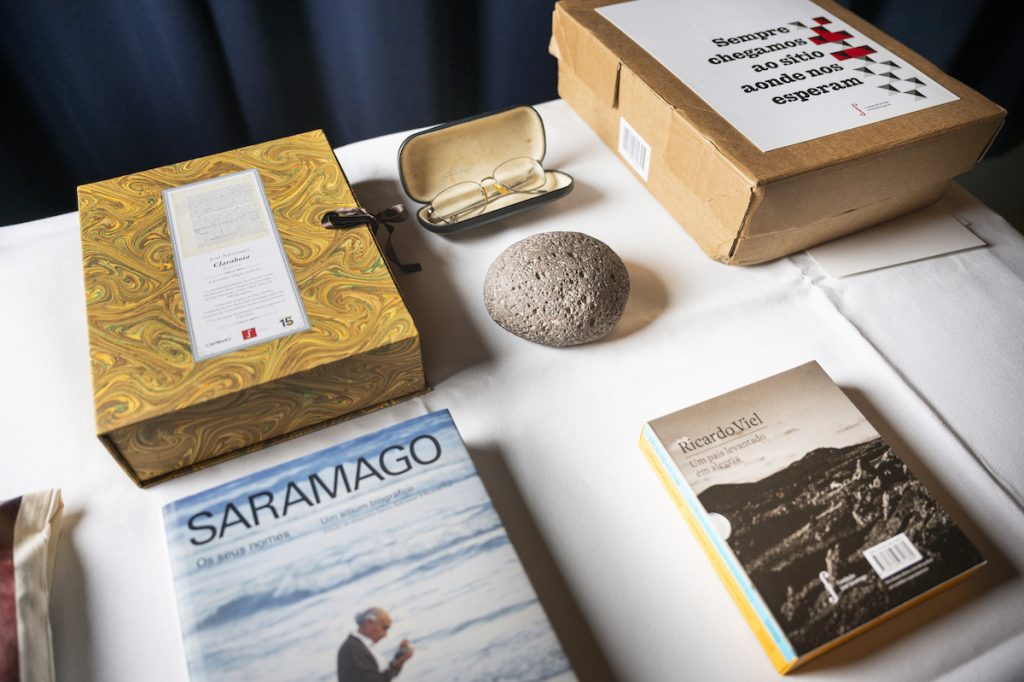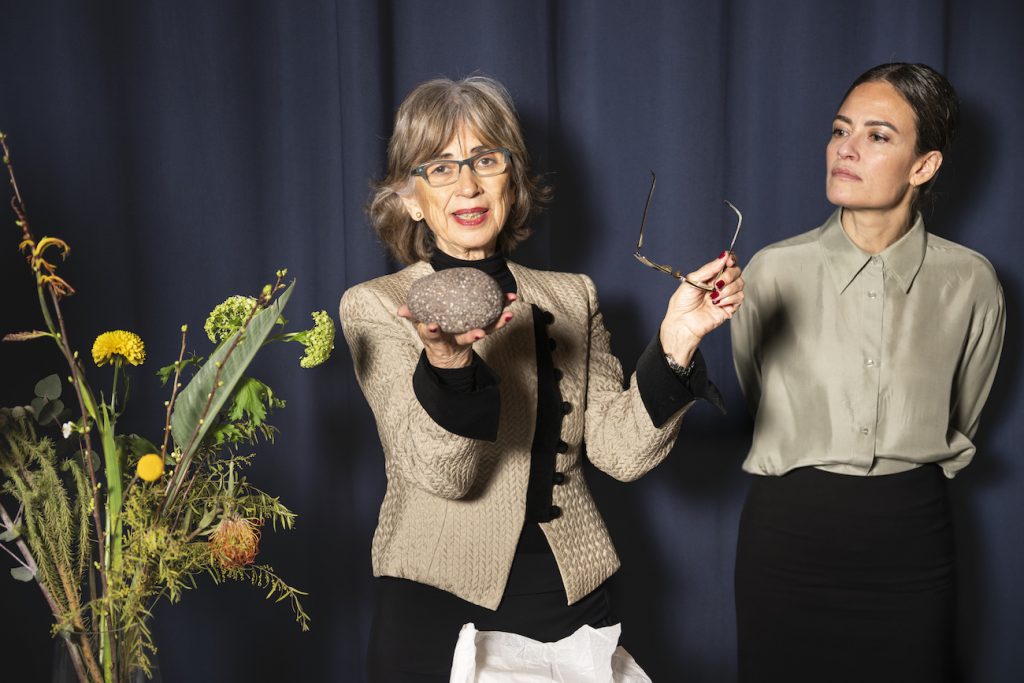
Erika Lanner and Pilar del Río. Photo: Nanaka Adachi. © Nobel Prize Outreach
The José Saramago Foundation and Pilar del Río, José Saramago’s widow, have selected and donated several objects to the Nobel Prize Museum. These included a pair of his glasses.
“Through these glasses, Saramago looked at the world, its history, the people we are – men and women,” Pilar del Río explained.
A stone that had been important to Saramago was also donated to the museum. Pilar del Río said that her husband had tried to describe people as statues up until the 1995 novel “Blindness”, but after that he became more and more interested in stone, i.e. the material that statues are made of. The stone that was handed over to the museum was found by Saramago on a beach in Lanzarote, one of the Canary Islands.
“José Saramago’s artefacts give us the opportunity to tell his story in new ways and with new life,” says Erika Lanner, Director of the Nobel Prize Museum. “They can also inspire future generations.”
-

Pilar del Río. Photo: Nanaka Adachi. © Nobel Prize Outreach
-

Several artefacts were donated. Photo: Nanaka Adachi. © Nobel Prize Outreach
-

Erika Lanner and Pilar del Río. Photo: Nanaka Adachi. © Nobel Prize Outreach
-
Pilar del Río. Photo: Nanaka Adachi. © Nobel Prize Outreach
-
Several artefacts were donated. Photo: Nanaka Adachi. © Nobel Prize Outreach
-
Erika Lanner and Pilar del Río. Photo: Nanaka Adachi. © Nobel Prize Outreach
Another part of the donation is a manuscript from Saramago’s early years, with all notes and corrections intact. It was rejected but was published posthumously 40 years later.
The donation of these personal artefacts fulfilled a promise made by José Saramago in 2004 and was made possible by Pilar del Río and the José Saramago Foundation, with the support of Camões Institute and Instituto Cervantes.
The author José Saramago was born in 1922 in Azinhaga, Portugal and died in 2010 in Lanzarote, Spain. He was awarded the Nobel Prize in Literature in 1998. The prize motivation says that Saramago: “with parables sustained by imagination, compassion and irony continually enables us once again to apprehend an elusory reality”.
Press images can be found here.
The media preview for the museum’s new exhibition “These things changed the world“ will be held on 8 March at 9.00 a.m. For more information, please contact: press@nobelprize.org
Press contact
Rebecka Oxelström, Head of Press
press@nobelprize.org
+ 46 8 122 084 45
About the Nobel Prize Museum’s collection
The Nobel Prize Museum’s collection of artefacts reflects the various subject areas of the Nobel Prize and the activities, interests and personalities of the laureates. The origins of these artefacts vary. Most of them were donated to the museum by the laureates themselves. Others have arrived at the museum by other routes. It does not seem strange that instruments and equipment are a part of scientific research. Or that pens and manuscripts tell us about authors’ works. But what do suitcases, caps and musical instruments say about the lives and achievements of Nobel Prize laureates? How can a pair of nail scissors, a bicycle or a jar of peanut butter tell us anything about creativity and insights? You can find out more about this in the exhibition “These things changed the world”, which will be inaugurated at the Nobel Prize Museum on 8 March.
Nobel Prize Museum
The Nobel Prize shows that ideas can change the world. The courage, creativity and perseverance of the Nobel Laureates inspire us and give us hope for the future. Films, in-depth tours, and artefacts tell the stories of the Laureates and their contributions ‘for the greatest benefit to humankind’. Based on the Nobel Prize’s unique combination of fields – natural sciences, literature and peace – we examine the greatest challenges of our time and show how we can respond to them through science, humanism and collaboration. With our exhibitions, school programmes, lectures and conversations, we at the Nobel Prize Museum strive to engage the public in making a better world. Today we are located at Stortorget in Gamla Stan, Stockholm’s Old Town district. We are planning to create a new home for our public outreach activities at Slussen in downtown Stockholm.
Disclaimer: Nobel Prize Museum is not directly or indirectly involved in the process of nominating or selecting Nobel Prize laureates. These procedures are strictly confidential and regulated by the Nobel Prize awarding institutions.
© Nobel Prize Museum 2024. Nobelpriset®, Nobel Prize® and the Nobel Prize medal are registered trademarks of the Nobel Foundation.